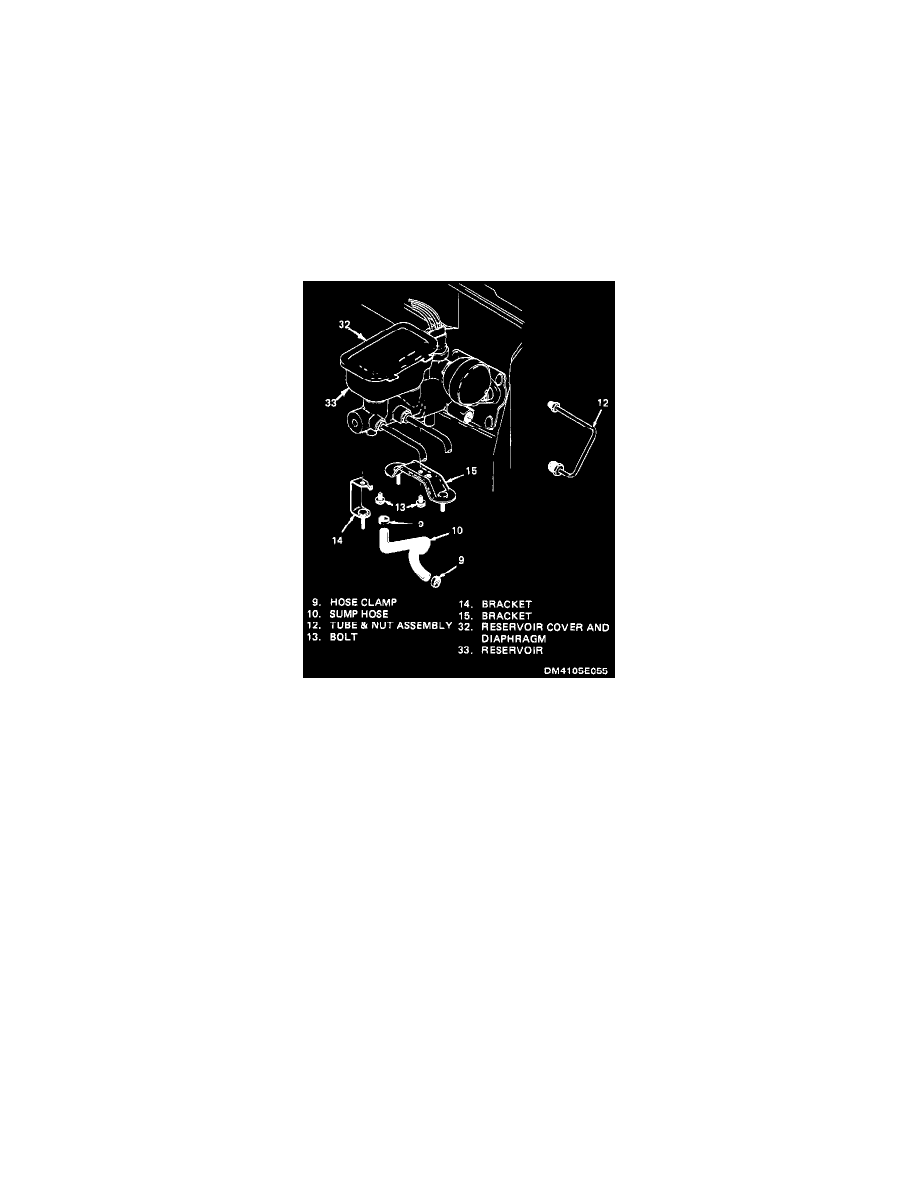Caprice V6-262 4.3L (1987)

Brake Bleeding: Service and Repair
Bleeding Procedure
Fluid Filling Procedures
NOTE: Bench bleed master cylinder portion of Powermaster before installing the unit on the vehicle.
1. Fill both sides of reservoir to the full marks on the inside of the reservoir. Use only DOT 3 Hydraulic Brake fluid.
2. Turn ignition "on." With the pump running, the brake fluid level in the booster side of the reservoir should decrease as the accumulator is
pressurized. If the booster side of the reservoir begins to run dry add brake fluid to just cover the reservoir port until the pump stops.
NOTE:Pump must shut off within 20 seconds. Turn ignition off after 20 seconds. Perform the following steps if the booster side of the reservoir
does not drop:
Figure 5 Sump Hose, Tube Nut & Assembly, and Motor and Pump Brackets
a.
Loosen the booster tube and nut assembly from the casting boss.
b.
Wait for brake fluid to gravity bleed from the loosened end of the tubing.
c.
When fluid begins to flow, tighten tube nut to 17 Nm (13 lbs. ft.).
d.
Check for leaks or flow back into reservoir.
3. Properly install reservoir cover to reservoir.
4. Turn ignition "off" and apply and release the brake pedal 10 times. Remove reservoir cover and adjust booster fluid level.
5. Perform Steps 2 thru 4 again.
6. Install reservoir cover to reservoir.
NOTE: Refer to the Powermaster Diagnosis if:
^
The pump does not shut off within 20 seconds.
^
The booster reservoir level does not stabilize.
^
The pump cycles without brake application. See: Hydraulic System/Testing and Inspection/Symptom Related Diagnostic Procedures/Symptom
Diagnosis - Powermaster Brakes
Conventional
NOTES:
^
The time required to bleed the hydraulic system can be reduced if the master cylinder is filled with fluid and as much air as possible is expelled
before the cylinder is installed on the vehicle.
^
Power brakes require removing the vacuum reserve by applying the brakes several times with the engine off.
1. Fill the master cylinder reservoirs with brake fluid and keep at least half full of fluid during the bleeding operation.
2. If the master cylinder is known or suspected to have air in the bore, then it must be bled before any wheel cylinder or caliper in the following
manner:
